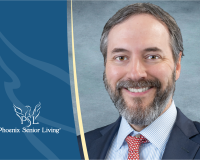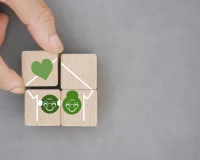When I think about bringing young kids and seniors together, I always smile thinking about my oldest son’s learning from his own grandfather. At a very young age, he worked side by side with his “Poppi” as they built a handcrafted wooden canoe. Although he may have been too young to actually contribute much, he soaked up every second of the experience, learning from the older generation. The pride both he and his grandfather felt, will last them both a lifetime.
The commitment of Phoenix Senior Living to continue to build upon our Intergenerational Programming is and always will be front and center for me as the founder. Not only do I have my own personal experiences to draw from, but I continue to see the rewards of bringing our youngest and oldest generations together in our communities. Both groups have so much to teach and learn from each other and our opportunity is to continue to find meaningful ways to bring them together. Activities that are fun for everyone involved and that also pay positive dividends in kids’ and seniors’ lives as well as for society as a whole.
Generations United, a non-profit organization, has a number of benefits and statistics that underscore the value and importance of intergenerational programming:
- Seniors who regularly volunteer with children burn 20% more calories per week, experienced fewer falls, were less reliant on canes and performed better on memory tests than their peers.
- Seniors with dementia and other cognitive impairments experience more positive effects during interactions with children than they did during non-generational activities.
- Seniors learn new innovations and technologies from their younger counterparts more readily.
- Children, in schools where seniors were regularly involved, had more improved reading scores compared to peers at schools without older adults involved.
- Interacting with seniors enabled young people to develop a positive attitude toward aging, a sense of purpose and community service.
- Youth involved in intergenerational mentoring programs are 46% less likely to begin using illicit drugs, 27% less likely to begin using alcohol and 52% less likely to skip school. Young people gain positive role models with whom they can interact on a regular basis.
It is interesting, but in so many ways, the young and the old share a different rhythm than those of us called “adults”. It is a rhythm that focuses not only on doing, but on the power of being. It is the simplicity of playing with blocks or tending flowers. The young and the old are most closely connected with the essence of living. They enjoy living in a moment that is the grand sum of the past, present and the future. They do not view time as an enemy– rushing time or pushing to fit as much into every hour as possible – time becomes a comfortable companion, a circle rather than a hard line for the young and the old. We have the ability to make a difference in society by keeping our newest and our wisest generations connected. They matter to each other!!





